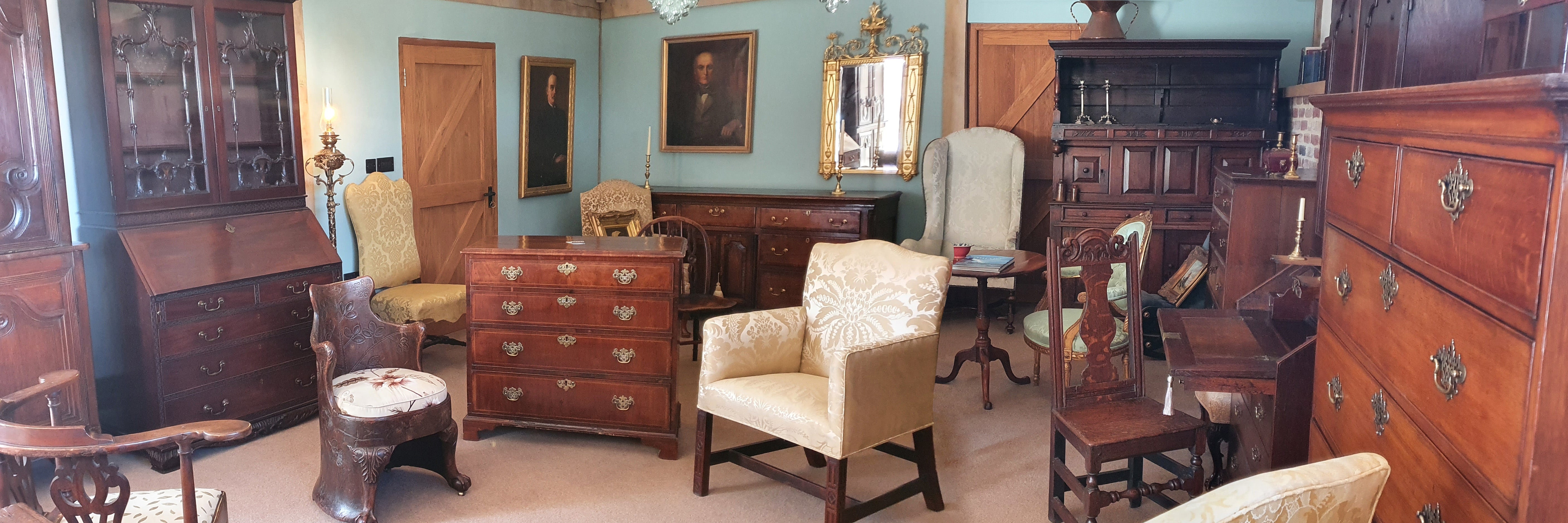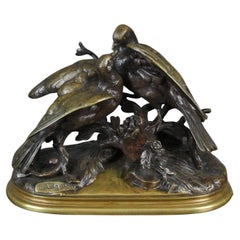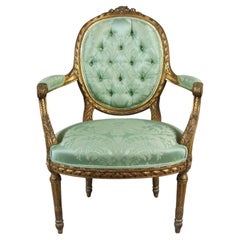Want more images or videos?
Request additional images or videos from the seller
1 of 6
Early, Large and Fine Grand Tour Serpentine Sculpture of the Dying Gaul c. 1850
$2,233.35List Price
About the Item
- Dimensions:Height: 8.5 in (21.59 cm)Width: 13.5 in (34.29 cm)Depth: 6.5 in (16.51 cm)
- Materials and Techniques:
- Period:
- Date of Manufacture:Circa 1850
- Condition:Wear consistent with age and use.
- Seller Location:Heathfield, GB
- Reference Number:1stDibs: LU7564238000002

About the Seller
5.0
Vetted Professional Seller
Every seller passes strict standards for authenticity and reliability
Established in 1980
1stDibs seller since 2022
14 sales on 1stDibs
Authenticity Guarantee
In the unlikely event there’s an issue with an item’s authenticity, contact us within 1 year for a full refund. DetailsMoney-Back Guarantee
If your item is not as described, is damaged in transit, or does not arrive, contact us within 7 days for a full refund. Details24-Hour Cancellation
You have a 24-hour grace period in which to reconsider your purchase, with no questions asked.Vetted Professional Sellers
Our world-class sellers must adhere to strict standards for service and quality, maintaining the integrity of our listings.Price-Match Guarantee
If you find that a seller listed the same item for a lower price elsewhere, we’ll match it.Trusted Global Delivery
Our best-in-class carrier network provides specialized shipping options worldwide, including custom delivery.You May Also Like
Grand Tour Neoclassical Bronze of “The Dying Gaul”
Located in Palm Springs, CA
A nice little bronze Grand Tour souvenir bronze of the Dying Gaul a famous sculpture of antiquity preserved in Rome. This bronze has nice detail. The patina is worn in some places and it is in estate found condition. We haven’t tried to clean or polish it.
Some patina loss minor nicks and surfaces scratches, please see the detailed photos.
For this interested this from Wikipedia about the original sculpture:
The Dying Gaul, also called The Dying Galatian[2] (Italian: Galata Morente) or The Dying Gladiator, is an ancient Roman marble semi-recumbent statue now in the Capitoline Museums in Rome. It is a copy of a now lost Greek sculpture from the Hellenistic period (323–31 BC) thought to have been made in bronze.[3] The original may have been commissioned at some time between 230 and 220 BC by Attalus I of Pergamon to celebrate his victory over the Galatians, the Celtic or Gaulish people of parts of Anatolia. The original sculptor is believed to have been Epigonus, a court sculptor of the Attalid dynasty of Pergamon.
Until the 20th century, the marble statue was usually known as The Dying Gladiator, on the assumption that it depicted a wounded gladiator in a Roman amphitheatre.[4] However, in the mid-19th century it was re-identified as a Gaul or Galatian and the present name "Dying Gaul" gradually achieved popular acceptance. The identification as a "barbarian" was evidenced for the figure's neck torc, thick hair and moustache, weapons and shield carved on the floor, and a type of Gallic carnyx between his legs.[5]
Description
The white marble statue, which may originally have been painted, depicts a wounded, slumped Gaulish or Galatian Celt, shown with remarkable realism and pathos, particularly as regards the face. A bleeding sword puncture is visible in his lower right chest. The warrior is represented with characteristic Celtic hairstyle and moustache with a Celtic torc...
Category
Early 20th Century Italian Figurative Sculptures
Materials
Bronze
Large Italian Grand Tour Bronze Sculpture "Dying Galata" /Dying Gaul, C. 1875
Located in West Palm Beach, FL
Large Italian Grand Tour Bronze Sculpture "Dying Galata"/Dying Gaul, C. 1875, Attributed to Naples Foundry
A remarkable large Italian Grand Tour bronze sculpture titled "Dying Galata" or "Dying Gaul," dating circa 1875 and attributed to the renowned Naples Foundry. This exquisite piece, an expertly cast bronze, retains its original black-brown patina and boasts a substantial size, standing 12 inches high, 26.5 inches wide, and 13.5 inches deep. It is a distinguished example of the iconic Grand Tour sculptures, which were popular souvenirs for affluent travelers during the 19th century.
The sculpture is a faithful rendition of the ancient Roman marble statue "The Dying Gaul," also known as "The Dying Galatian" or "The Dying Gladiator." The original marble, now housed in the Capitoline Museums in Rome, is a Roman copy of a lost Greek bronze sculpture...
Category
Antique 19th Century Italian Grand Tour Figurative Sculptures
Materials
Bronze
$7,150
H 12 in W 26.5 in D 13.5 in
Antique Grand Tour Ornately Cast 'The Dying Gaul' Italian Bronze Sculpture
Located in Hamilton, Ontario
This very ornately cast bronze sculpture is unsigned, but presumed to have been done in Italy in approximately 1900, in the Classical Roman style. This figurative study depicts the famous Classical Roman sculpture known as 'The Dying Gaul...
Category
Early 20th Century Italian Classical Roman Figurative Sculptures
Materials
Bronze
$1,295
H 6 in W 10 in D 5 in
Hand Carved Antique Alabaster Sculpture / Statue of The Dying Gaul, Grand Tour
Located in Lisse, NL
Handcarved and remarkable work of art of the 'Dying Gaul’ or 'The Dying Galatian'.
If you are a collector of rare and good quality antiques then this rare and wonderfully hand carve...
Category
Antique Late 19th Century Italian Grand Tour Figurative Sculptures
Materials
Alabaster
$2,890
Free Shipping
H 8.6 in W 17 in D 8 in
Grand Tour bronze figure of “The Dying Gaul”, After The Antique
Located in Montreal, QC
A late 19th century Grand Tour bronze figure of “The Dying Gaul”, after the antique. The Dying Gaul depicts a warrior in his final moments, next to his shield and sword, his face contorted in pain just before he collapses from the mortal wound to his chest The original marble figure, which is in the Capitoline museum in Rome is thought to be a Roman copy of a Greek sculpture in Bronze. As an image of a vanquished enemy, the sculpture embodies courage in defeat, self-possession in the face of death, and the recognition of nobility in an alien race.
“The Dying Gaul” was found in Rome with another ancient marble...
Category
Antique Late 19th Century Italian Classical Greek Figurative Sculptures
Materials
Bronze
Mid-19th Century Grand Tour Bronze Figurative Sculpture 'The Dying Gaul', Italy
Located in North Miami, FL
Mid-19th Century Grand Tour Bronze Figurative Sculpture 'The Dying Gaul', Italy
By: unknown
Material: bronze, copper, metal
Technique: cast, molded, polished, metalwork, patinated
D...
Category
Antique 1850s Italian Grand Tour Figurative Sculptures
Materials
Metal, Bronze, Copper
$5,700
H 14 in W 28 in D 13 in
Grand Tour Jennings Dog Serpentine Sculpture After the Antique
Located in Wormelow, Herefordshire
An antique carved Italian serpentine sculpture after the Grand Tour Jennings Dog.
This seated dog displays impressive carved details as it sits proud...
Category
Antique Mid-19th Century Italian Grand Tour Animal Sculptures
Materials
Serpentine
Pair of Serpentine Grand Tour Lions
Located in Cheshire, GB
Pair of serpentine Grand Tour lions.
Category
Antique 19th Century Unknown Grand Tour Animal Sculptures
Materials
Serpentine
Statuary Marble Sculpture of The Dying Gaul After the Antique
Located in Wormelow, Herefordshire
A mid 19th century statuary marble sculpture of the ‘Dying Gaul’ after the antique.
This marble sculpture is a scale depiction of the larger Dying Gaul marble statue, currently loca...
Category
Antique Mid-19th Century Italian Neoclassical Figurative Sculptures
Materials
Marble, Statuary Marble
$12,124
H 15.16 in W 29.14 in D 13.39 in
Antique Bronze Figure of The Dying Gaul
Located in London, GB
A bronze figure of the dying Gaul after the Antique, on verde marble base, Italian, nineteenth century.
Dimensions: 30.5cm (12") High, 35cm (13¾") Wide, 65cm (25½") Long, 13.5cm (5¼...
Category
Antique 19th Century Italian Classical Greek Figurative Sculptures
Materials
Marble, Bronze
More From This Seller
View AllFine Original Bronze of Lovebirds - Tourtereaux - by Joules Moigniez c. 1865
Located in Heathfield, GB
A very fine original bronze group of lovebirds by the French sculptor Jules Moigniez (b. 1835 d. 1984)
Moigniez studied in Paris under Comolera and exhibited first at the Exposition Universelle of 1865.
He received a medal at the Great Exhibition of London in 1862 and his bird sculptures earned him first place in this field.
In excellent original condition, ‘Tourtereaux’ signed and with a beautiful golden brown patina.
With provenance from Harwood House...
Category
Antique Mid-19th Century Animal Sculptures
Materials
Bronze
Large Well Patinated 19th Century Bronze of Neopolitan Dancer - by Duret c. 1880
By François-Joseph Duret
Located in Heathfield, GB
A large 19th century bronze statue of the Neopolitan Dancer with tambourine from a model by Francisque Joseph Duret. Signed to base Duret f. and with a ha...
Category
Antique 19th Century Figurative Sculptures
Materials
Bronze
Fine Georgian Giltwood Arm Chair in the Manner of Thomas Chippendale
Located in Heathfield, GB
Newly upholstered in a spring green pure silk from the Gainsborough Silk Weaving Company (thickly woven from an original 18th century fabric pattern) and with double piped and button...
Category
Antique 18th Century Armchairs
Materials
Giltwood
Exceptional Rare and Fine Padauk Wood Bureau in the Chippendale Manner, c. 1780
Located in Heathfield, GB
In superb original condition, with a fantastic colour, and retaining the original fine quality brass hardware. This is a very high quality solid Padouk bureau...
Category
Antique 18th Century Chippendale Desks
Materials
Padouk
Lovely 19th Century Wing Arm Chair in the Queen Anne Manner c. 1850
Located in Heathfield, GB
A comfortable and beautiful mid 19th Century winged armchair – broad and deep – newly upholstered in a top quality heavyweight wool and linen fabric.
The chair’s showframe is mahoga...
Category
Antique 19th Century Queen Anne Armchairs
Materials
Fabric, Mahogany
Heart-warming 17th Century Carved Oak Face Corbels c. 1670
Located in Heathfield, GB
A pair of handsome and heart-warming carved oak faces, believed to originally have been adorning a large cupboard and which were carved by skilled hands in the second or third quarti...
Category
Antique 17th Century Figurative Sculptures
Materials
Oak
Recently Viewed
View AllMore Ways To Browse
Life Size Roman Marble Figure
Dying Gaul
The Dying Gaul
Dying Gaul Sculpture
Bronze Dying Gaul
Polish Sword
Vintage Children Figurines
Art Deco Pierrot
Art Nouveau Bronze Statue
Bronze Female Dancers
Bronze Mermaid
Child Sculptures Ceramic
Chinese Couple
Dancing Satyr
Figure Clay Sculptures
Four Seasons Series
Indian Goddess
Italian Wood Carved Cherubs



